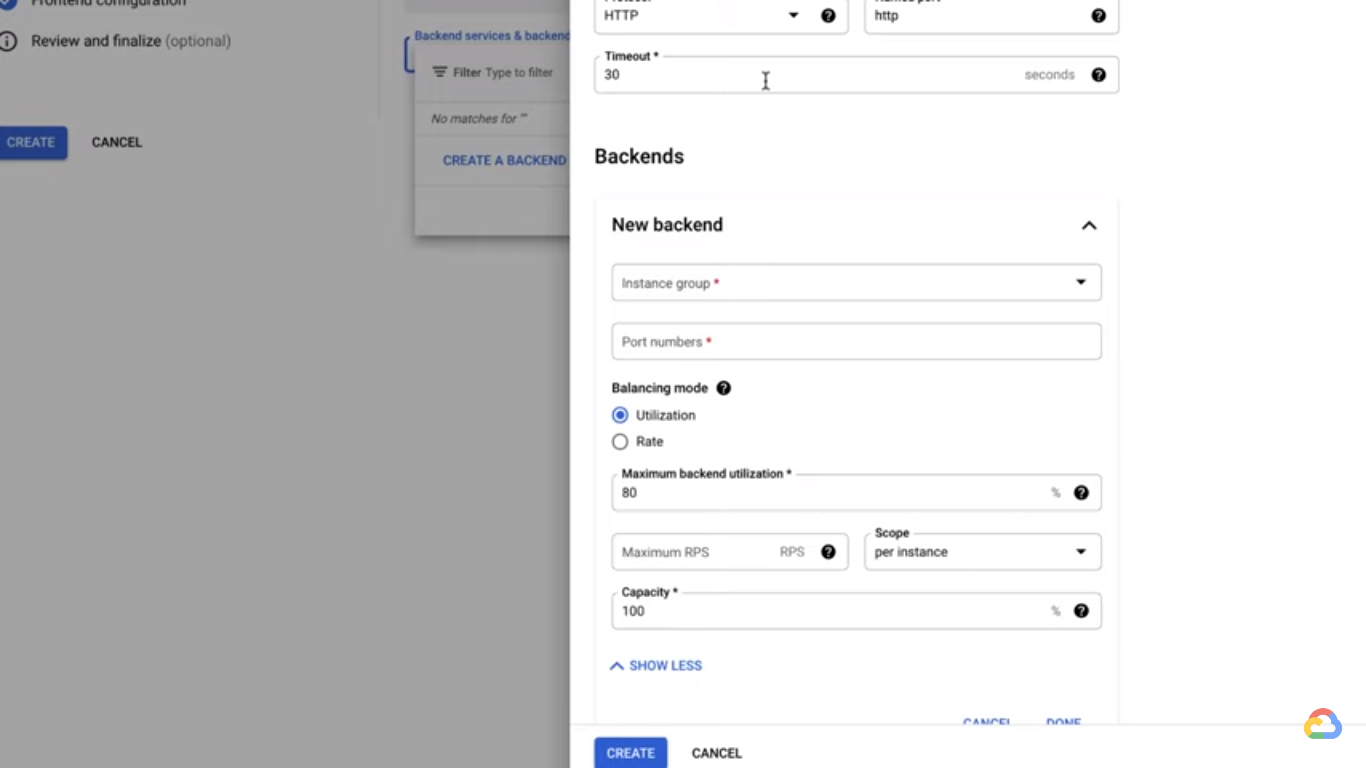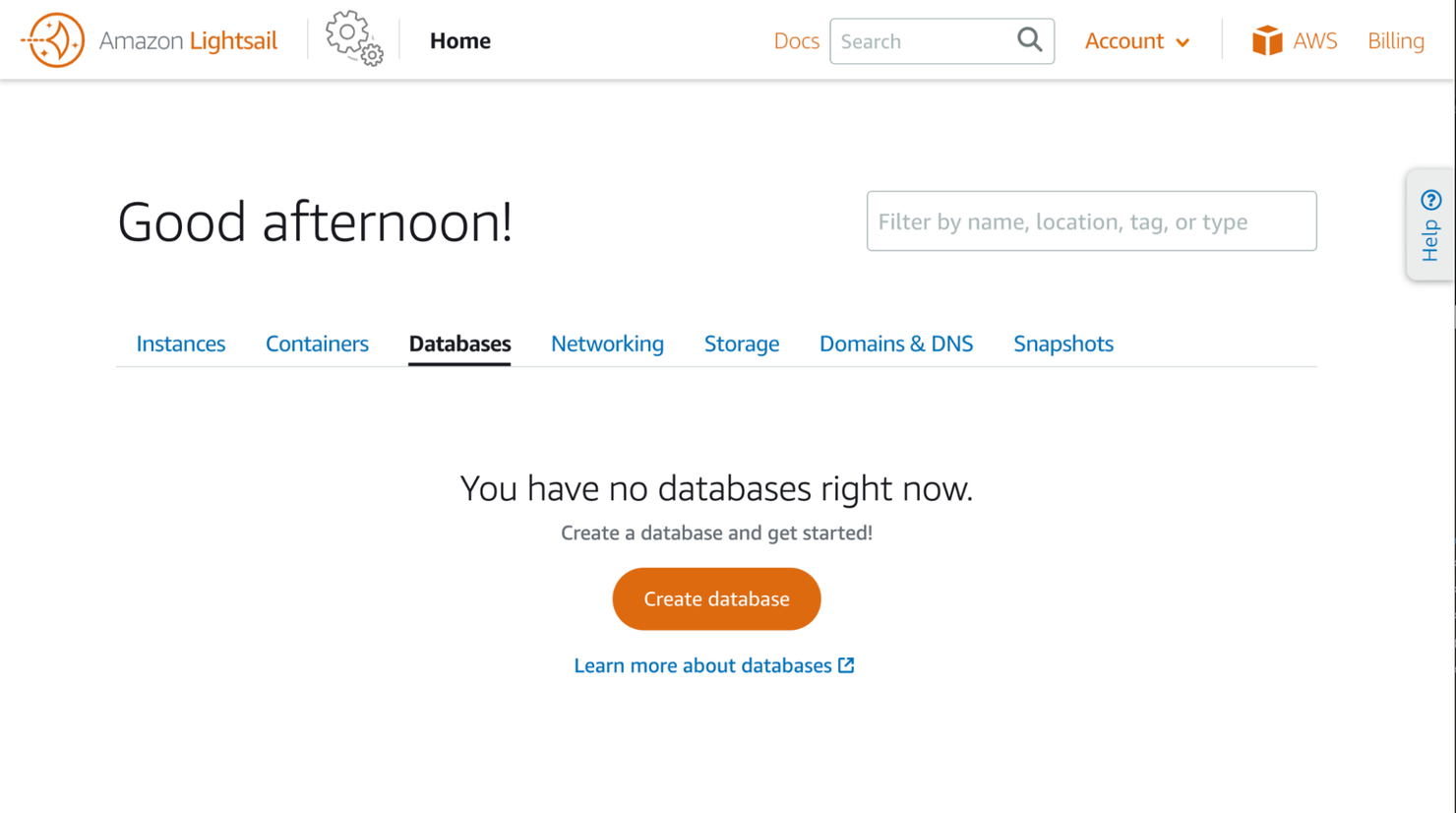10 Best Load Balancing Software Shortlist
Here's my pick of the 10 best software from the 20 tools reviewed.
Our one-on-one guidance will help you find the perfect fit.
Finding a reliable load balancing solution that works for the scope of your operations and tech stack can be a hassle for even a reasonably technical person.
In the list below are my picks for the best load balancing software, along with screenshots and the reasons I picked each one. I’ve also included pricing information and the criteria I used to create the shortlist.
What Is Load Balancing Software?
Load balancing software analyzes inbound traffic and distributes it across multiple servers. This provides users with smooth access to websites and applications, and it helps media like video and audio load at their intended quality, even during peak hours.
Best Load Balancing Software Summary
| Tools | Price | |
|---|---|---|
| Fastly | From $50/user/month | Website |
| Google Cloud Load Balancing | From $0.025/hour | Website |
| AWS Elastic Load Balancing | From $0.0225/hour | Website |
| Amazon Lightsail | From $0.025/hour | Website |
| Citrix NetScaler WAF | Pricing upon request | Website |
| NGINX Plus | From $0.425/hour | Website |
| NodeBalancer | From $0.015/hr | Website |
| IBM Cloud | From $10/user/month (billed annually) | Website |
| Azure Load Balancer | From $0.025/hour | Website |
| Barracuda Networks Web Application Firewall | Pricing upon request | Website |

Compare Software Specs Side by Side
Use our comparison chart to review and evaluate software specs side-by-side.
Compare SoftwareBest Load Balancing Software Reviews
I’ve assessed each tool below in depth based on how robust their feature sets are, their cost-effectiveness, and more. I’ve included my reasons for picking them as well as a comparison chart that summarizes all the information.
Here are my picks for top load balancing services:
Fastly is a cloud platform that allows users to improve their services’ speed, scale, and security, and one of its products is a Layer-7 load balancer.
Why I Picked Fastly: I picked Fastly because it manages inbound HTTP and HTTPS requests with in-depth content-aware routing decisions to allow you to set rules for how you want traffic redirected. With these rules, you can improve responses before they go out and provide a strong foundation for your infrastructure.
Fastly Standout Features and Integrations
Features I love include the ability to instantly scale up to several terabits per second (Tbps), allowing for smooth, rapid growth. It also offers granular control over both content-aware and other routing decisions for streamlined scaling and visibility.
Integrations include native support for Google Cloud, Azure, and AWS.
Pros and cons
Pros:
- Strong content-aware routing
- Future-proofing with HTTP/3 support
- In-depth configuration options
Cons:
- Difficult initial setup
- Opaque pricing
Google Cloud Load Balancing is a fully distributed part of the Google Cloud platform with more than 80 distinct locations. It can balance HTTP(S), TCP/SSL, and UDP traffic.
Why I Picked Google Cloud Load Balancing: Google Cloud Load Balancing stood out to me because it takes a different approach from the competition by going to great lengths to keep its different load balancer types in one place rather than split them into separate services.
When you get started with the platform, you’re presented with a detailed flowchart that you can follow to find a load balancer that you think might work, and if it doesn’t, it’s very easy to switch over to a different one because of the way they’re set up.
This makes it ideal for teams that are constantly iterating upon their product with requirements that change frequently.
Google Cloud Load Balancing Standout Features and Integrations
Features that I believe help active developers work smarter include Cloud Armor integration, which provides advanced security capabilities that protect you against application and DDoS attacks with strong web application firewall (WAF) functions. High-fidelity health checks ensure you know the status of your service and can act on issues early before they become serious. It’s also built on the same infrastructure that serves the front end of Google, meaning it can support up to 1 million requests per second.
Integrations are available natively with Google Cloud Content Delivery Network (CDN) and Google Cloud Armor.
Pros and cons
Pros:
- User-friendly interface
- Easy to set up
- Strong collaborative features
Cons:
- Slow customer support
- Complex documentation
Elastic Load Balancer is one of the load balancers available within the Amazon Web Services (AWS) platform. It splits its main features across four levels: Application, Network, Gateway, and Classic Load Balancers.
Why I picked AWS Elastic Load Balancer: I chose AWS Elastic Load Balancer for its ability to distribute traffic across a variety of targets, such as virtual machine instances, containers, IP addresses, Lambda functions, and appliances, to single or multi-availability zones. This ensures that overall capacity can scale upward or downward depending on demand and increases your system’s availability.
AWS Elastic Load Balancer Standout Features and Integrations
Features I like in ELB for large-scale operations include health checks that automatically distribute incoming traffic to healthy targets. High throughput accounts for traffic patterns that are prone to sudden changes, while Amazon CloudWatch monitors and logs metrics like error and request counts, types, and latency.
Integrations include native support for other AWS services such as Elastic Compute Cloud (EC2) Instances, Elastic Container Service (ECS), Certificate Manager, CloudWatch, and AWS Web Application Firewall.
Pros and cons
Pros:
- Strong AWS integrations
- Health checks that ensure availability
- High potential for scalability
Cons:
- Gets expensive fast
- Limited control and customization options
Amazon Lightsail is part of the AWS family of cloud-native products. There are several other load balancing options within the catalog, but Lightsail makes the most sense for smaller operations.
Why I Picked Amazon Lightsail: I picked Amazon Lightsail because of how its tiers are organized, where the entry-level gives you a virtual server with 512MB of memory running on a single-core processor. For a lightweight app or website, this should be enough to handle most user requests and the occasional spikes.
Amazon Lightsail Standout Features and Integrations
Features that made me recommend Lightsail for lightweight applications that are sill in their early stages include an intuitive management console that makes it easy for beginners to operate and configure the load balancer. There’s a different version called Lightsail for Research that lets you run analytical functions in the cloud with Jupyter, RStudio, and Scilab preloaded.
Integrations are available natively with most other products in the AWS lineup, including Amplify, Beanstalk, Elastic Compute Cloud (EC2), Lambda, Batch, Local Zones, Outposts, Auto Scaling, Wavelength, and SimSpace Weaver.
Pros and cons
Pros:
- Predictable billing
- Beginner friendly
- AWS integrations
Cons:
- Hard to deploy with third-party providers
- Poor customer support on low tiers
Citrix NetScaler is an application delivery controller (ADC) that provides Layer 4 and 7 balancing as well as identity management, security, and other functions. The version I’m going to discuss is a software alternative to the hardware option from the same company, also under the NetScaler brand.
Why I Picked Citrix NetScaler WAF: I picked NetScaler because of its built-in Remote Desktop Policy (RDP) proxy that also allows for stateless configuration. When you set this up, you can use the Citrix Secure Ticket Authority (STA) server to manage the short-term requests that are typical of stateless applications.
Citrix NetScaler WAF Standout Features and Integrations
Features that really stand out to me include support for both Layer 4 and Layer 7 balancing, making for a comprehensive solution. The native RDP proxy also ensures that users’ sessions aren’t affected by outages, even at higher traffic levels, making stateless applications more reliable. Granular analytics lets you detect misuse and attacks early and take action.
Integrations include pre-built support for Azure Active Directory (AD), Okta, Duo, CyberArk, and Zendesk Blumira.
Pros and cons
Pros:
- Wide range of configuration options
- Flexible
- User-friendly interface
Cons:
- Sparse documentation
- Complex initial configuration
NGINX Plus is a premium alternative to the open-source NGINX, both of which are developed and maintained by the same core team. Plus, however, brings additional perks with its price tag, most notably customer support.
Why I Picked NGINX Plus: I picked NGINX Plus because it’s lightweight, making it a suitable choice for on-premise deployments running minimal hardware. With customer support at your fingertips, you can comfortably maintain a private server and not worry about putting out every fire by yourself.
NGINX Plus Standout Features and Integrations
Features include the same things you get with NGINX, which I’ve found leaves a very small footprint on hardware, along with some enterprise-grade additions like active health checks that give you insight into the state of your servers. You also get DNS service discovery and an API that purges caches.
Integrations include native support for Kubernetes, AWS, Google Cloud Platform, Azure, and major versions of Linux like Ubuntu, Oracle, Alpine, and Redhat.
Pros and cons
Pros:
- Active health checks
- DNS service discovery
- Strong customer support
Cons:
- Licensing model
- Difficult initial configuration
Linode, a cloud service company that provided virtual machines, servers, and infrastructure, introduced NodeBalancer as a load balancing solution. Akamai acquired Linode in 2022 and integrated it into its own offerings the following year, but NodeBalancer is still available.
Why I Picked NodeBalancer: I picked NodeBalancer because of how well the company behind it lays out what it means to switch to the solution, so you have a clear idea of what you’re getting into. Aside from pricing information, you also know the kinds of servers available and aren’t locked in, making it easy for a small business to feel it out.
NodeBalancer Standout Features and Integrations
Features that I believe small businesses will love include sticky sessions that have your NodeBalancers send all requests through the same back end, allowing for sessions to work more smoothly. Throttling sets a restriction on a NodeBalancer to prevent misuse and protect resources on your back end.
Integrations are available natively with Terraform, Pulumi, Rancher, and Ansible, as well as other products from the Akamai Connected Cloud.
Pros and cons
Pros:
- Integrations with Akamai and Linode services
- Built-in throttler for resource protection
- Transparent pricing
Cons:
- Future uncertain with Linode acquisition
- Slow customer service
IBM Cloud offers a variety of load balances depending on your traffic volumes, allowing for scaling. The options are classic and virtual private cloud (VPC) load balancers.
Why I Picked IBM Cloud: I picked IBM Cloud for its support of virtual servers for VPC infrastructure, which creates a hybrid cloud model that allows for more flexible deployments. Companies that want to reap the benefits of public cloud computing but want to keep certain parts of their operations on-premises can implement this approach to load balancing.
IBM Cloud Standout Features and Integrations
Features in IBM Cloud that I liked for hybrid cloud usage include round robin and least connections capabilities for intelligent distribution of traffic. You also get multiple options for deployment, including the built-in interface, an Application Programming Interface (API), and Terraform.
Integrations are available with Azure and Amazon Web Services (AWS) when you use IBM API Connect.
Pros and cons
Pros:
- Several locations to choose from
- API for custom integrations
- Strong support for hybrid clouds
Cons:
- The interface is not beginner-friendly
- Complex documentation
Azure Load Balancer is one of four load balancing options available on the Microsoft Azure platform. It operates on Layer 4 of the Open Systems Interconnection (OSI) model.
Why I picked Azure Load Balancer: I picked Azure Load Balancer because it has three sub-units, namely Standard, Basic, and Gateway, all of which serve different situations with targeted pricing, scaling capabilities, and other features. This makes it an attractive choice for businesses looking to scale upward or downward because they don’t have to relocate their operations as they cross thresholds.
Azure Load Balancer Standout Features and Integrations
Features that I think will help you scale operations include support for millions of flows on all UDP and TCP applications while maintaining high latency and low throughput. Health probes let you automate status monitoring, so it’s easy to scale upwards.
You can also take more control of your platform if you configure rules that determine how the load balancer distributes inbound traffic. With High Availability (HA) ports, you can use one rule to distribute UDP and TCP flows for increased scale and availability within virtual networks for network virtual appliances (NVAs).
Integrations are available with Azure Virtual Machine Scale Sets, Microsoft Service Level Agreements (SLAs), Azure Virtual Machines, and Valtix.
Pros and cons
Pros:
- Comprehensive Layer 4 coverage
- Support for millions of flows
- Health probes
Cons:
- No Layer 7 balancing
- No SLAs on Basic
Barracuda Networks provides physical load balancers but also has a software alternative in the form of its Web Application Firewall for more flexible deployments. It’s a cloud-native solution that protects web apps and gives you insights into their performance as well as granular control all in one place.
Why I picked Barracuda Networks Web Application Firewall: I chose Barracuda Networks because it has a very strong approach to customer service with a responsive department. The company has dedicated lines for major regions such as EMEA, Australia, China, Japan, and India and says that all requests for assistance go straight to a live person.
Barracuda Networks Standout Features and Integrations
Features that complement the customer service team include adaptive profiling, which samples traffic from reliable hosts to let admins implement whitelist rules on vulnerable sectors to reduce threats. It also protects against bots to keep scraping, inventory hoarding, spam, and similar types of attacks at bay, which all teams can benefit from in my opinion.
There’s also a built-in engine that automates the creation and maintenance of configurations on complex applications by analyzing traffic to provide recommendations.
Integrations are pre-built for third-party platforms like Google Cloud, Microsoft Azure, and AWS.
Pros and cons
Pros:
- User-friendly interface
- Easy integration with hardware load balancers if needed
- Strong customer support
Cons:
- Steep learning curve for in-depth features
- Limited third-party integrations
Other Options
I’ve created a list for some other tools that didn’t make the main shortlist but might still be worth a look:
- SANtricity
Best automatic load balancing
- Kemp Virtual LoadMaster
Best for test-driven development
- Gcore
Best Kubernetes management features
- Microhost
Best customer service
- Scaleway
Best for Europe-based traffic management
- Edgenexus
Best user interface
- HAProxy
Best open-source option
- Traefik
Best Docker management features
- Consul
Best service discovery
- Akamai Ion
Best CDN integration
Selection Criteria For Load Balancing Software
Here are some of the key aspects I was assessing when making my picks for the best load balancing software.
Core Functionality
I looked at each option’s ability to handle the expected levels of traffic for the levels at which I was recommending them, with features such as:
- How they ensure availability, and how robust the fail-safes are
- Which protocols they support, a factor that determines which layer they can operate on
- How many requests they can handle at their highest tiers
- For companies that also manufacture physical load balancers, how independent are the software alternatives?
Key Features
Each option needed to be future-proof, with features that don’t hold users back, including:
- Being able to function on a variety of deployments, from on-premise to third-party platforms
- Security and encryption as traffic gets routed out to different servers
- Support for modern protocols
Usability
I prioritized tools that made sense for the level at which I was evaluating them. For example, if it’s something for a small team with limited technical knowledge, I looked more into tools with an easy-to-navigate user interface that didn’t rely on a command line for the bulk of tasks.
Value for Money
Because load balancing is tied directly to scaling, I looked at products whose performance kept up with the price tag. If I was recommending something for a small company where the starting price seemed steep, the features needed to make a strong case and potentially allow them to save money elsewhere, possibly in development costs.
People Also Ask
If you still feel like you need some more info to really get load balancing down, here are some answers to questions you might have.
Do I really need a load balancer?
How many load balancers do I need?
Is a load balancer an API?
What is the difference between an L4 and L7 load balancer?
Conclusion
The load balancing software you choose should match your operations, both internal and external. If you have a heavy user base, you should look at one that scales but retains a favorable ROI at higher tiers. If you have a small team or one that isn’t able to dedicate a lot of time to back-end management, you should consider one that does as much of the heavy lifting for you as possible.
For more insights that help you choose the tools that work best for you, subscribe to our newsletter.




















